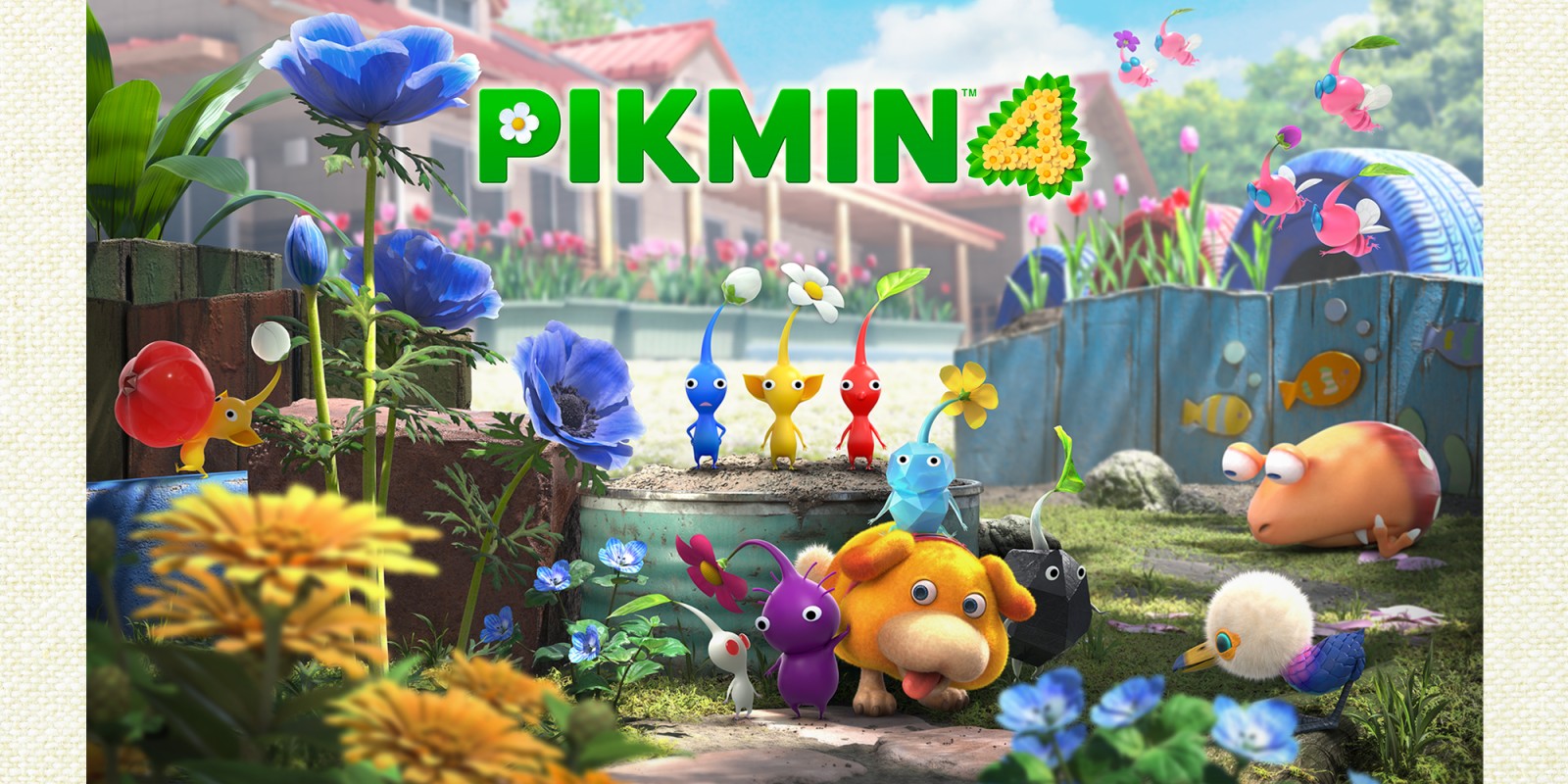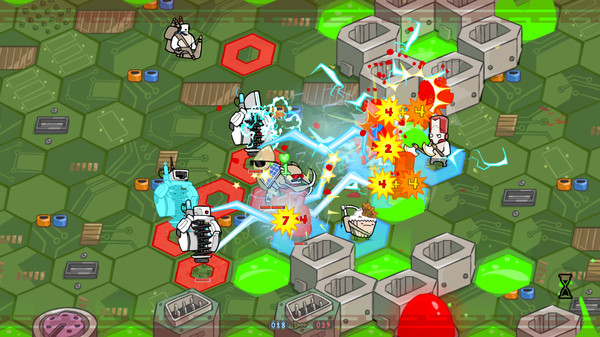It feels a little pointless for me to write about a game that has already been devoured by the game journalism/influencer cycle that is modern games media So to actually add some value here, most of this writeup is going to be from the perspective of how the game plays with 4 human players, and some of the oddities with that.
The best way I would describe Balder’s Gate 3 is that it’s a digital version of Dungeons and Dragons, run by a strict but infinitely patient Dungeon Master. Yes, you can win all these combat encounters by just shoving people off cliffs. Yes, you can attack random people around you. Yes, you can let yourself be dominated by the purple mindfuck octopus. It eats your brain, you die. Better load a save.
This is where Baldur’s Gate is at its best in some ways. The engine handles all the stupid fiddly bits around combat, rolling dice, keeping track of HP, movement, spell slots, inventory, items, weight, etc.

Brief aside: Baldur’s Gate also gets to do one thing that tabletop D&D doesn’t: forcing players to learn systems via failure. Unlike a standard D&D game, where TPK’s mean everyone rolls up a new sheet, BG3 can wipe the party, ask “Now, what did we learn from that?” and have you run it back. And when it comes to learning D&D’s esoteric bullshit, I think this is quite a strong way to do it.
Act 1: You meet in an out of control spaceship.
So first, some background. I’m not a massive RPG person, so the only way I had any real interest in BG3 was playing the game with friends. I also didn’t want to spend $60 only for everyone to drop out.
Before buying, I got the three friends I planned to play it with to promise that we would play the game every weekend at some point on Saturday until we finished it. The hardest boss (scheduling) already defeated, the adventure kicked off.
Baldur’s Gate 3 is split into 3 parts, or Acts as the game calls them, with limited ability to go back once you proceed from one to next. To my mind, Act 1 is the strongest, with Acts 2 and 3 being a bit weaker for reasons we’ll get to. But at 4 players, Act 1 worked quite well.
We spent a lot of time messing about in Act 1 and it had some of the most satisfying moments of the game for me. The highlight, though, was the Underdark, and some of the roleplaying choices it offered. Baldur’s Gate tends to play more with the tropes of “Good vs. Convenient” rather than “Good vs. Evil.” This is to say, you can get what you want by letting people suffer, or can stick your neck out for them, and have someone else try to chop it off.
I think the strength of Baldur’s Gate’s writing was the clearest to me when I found myself wanting to really have my character (a paladin) stick to his ideals even when it was incredibly inconvenient. On the whole, though, Act 1 as a group of 4 didn’t really have as many of the pain points that would start to crop up later, starting in…
Act 2: The woods are dark and deep and trying to eat us.
Act 2 is where problems started to crop up. If Act 1 is traditional D&D fantasy (after the opening), Act 2 ratchets it up a bit, bringing you into the Shadow-Cursed Lands. They’re lands that are cursed by shadows. And these shadows try to eat you. One cool mechanic is that they won’t eat you if you’re carrying a torch. Which is fine except if you’re a party of 4, everyone is going to be carrying torch. This means no one has a weapon out when you get ambushed.
It’s also where we started seeing bugs. Here are some notable ones. We got soft-locked at our camp, and had to lose an hour or two of progress. The host player’s computer crashed each time he talked to an specific NPC for a romance-chain cutscene. Once, one of our characters was permanently locked up jail, even while not jail, and required that special type of esoteric bullshit to fix.
Act 2 was also where the meta-gaming got ratcheted up, at least a bit. Of the 4 of us in our party, two hadn’t played the game before, and two had. There were a few encounters that we did not do in what I’d call the “full spirit” of the game. For example: when I go to talk to strangers, I do not usually immediately barricade the entire room with pallets in case, say, I’m attacked by flying ghouls mid conversation.
I have mixed feelings on this. On the one hand, I don’t harbor any ill will towards my friends for this. I knew they’d played before, and it’s hard to just play a game knowing everything that happens, and not spoil anything. On the other hand, it kind of a bummer. I think sometimes failing to protect an important NPC and living with consequences of that is fair.
In addition, Act 2 also involved one of the major problems with the game at 4 players: NPC party member quest chains. Many of these chains require having the NPC present in the party for the chain. But your party is capped at 4 characters, which meant that we had to kick out a human player and have them sit on the side while everyone else escorted whoever it was to wherever they had to go.
It’s a huge frustration, and makes it very difficult to want to do these quests, as it meant not actually playing with my friends. You know, the people I’m there to play the game with. But more on that in…
Act 3: We’re outta time, and only got 4000 minutes to save the world.
Act 1 is pushing the shopping cart down the hill. Act 2 is the wheels getting a little wobbly. Act 3 is the bit where the wheels fly the fuck off, and the whole thing flips head over heels.
That’s not to say Act 3 is bad. Baldur’s Gate, as it is realized in the game, is one of the best designed cities I’ve ever seen in a video game. They manage to make every inch of it both relevant and interesting, but without feeling like it was designed just for the player. It’s fascinating design that I can observe, but not parse in any way that I would be capable of mimicking.
And because it’s so jam packed, there is a ton to do. That said, it does feel less fleshed out on occasion than some of the other acts. Finally, this where the “Add the party member to the party” comes back with a vengeance. There were at least four party quests we didn’t touch because it would have meant someone had to stop playing.
That’s not to say there wasn’t enough to do. Despite having party members who had played the game multiple times, we found a new-to-them side quest that elaborates on some pretty critical lore for one of the primary characters. I cannot stress enough how content packed this game is.
I do have one story I want to share though. Throughout the game, we had kept an NPC alive, and done various side quests around him. Many of these were a pain, but it was really fun to see him change as we helped him, and grow.
Then in act 3 one of my friends murdered him for armor. It felt really bad. It was made even worse by the fact that we didn’t need this chest armor, and this person got it only because they wanted to respec into a brand new build for the 5th or so time.
This was probably the biggest moment that broke the fantasy for me, and it’s unfortunate that this happened right before the…
Finale: wake up and choose violence.
The finale to Baldur’s Gate is a comparatively short affair compared to the rest of the game. It is an impactful and cinematic story moment and set of fights that doesn’t quite overstay its welcome.
It is also unfortunately where the game just shits the bed technically. Performance is incredibly bad. Some of the enemies really don’t quite look like they belong. We saw at least 3 fairly major bugs occur, including enemies not spawning, one member of the party having all of their items unequipped while still equipping them, and watching a magical spear that returns after being thrown… not doing that, and just vanishing.
It’s unfortunate, because instead of a blaze of glory, BG3 goes out with the equivalent of an oil fire. Instead of a sense of dramatic triumph, the primary emotion I have when I think back on this part of the game is frustration. I’d rather fight mind flayers than pathing and the framerate.
But when the dust settles, it’s time to take stock of the casualties, and the story.
Hey, remember when I mentioned issues with the NPC party member quests?
Epilogue: So long and thanks for all the flesh.
So. Because we hadn’t done many of the NPC quests, the “post” final fight sequence of cutscenes was one of the most depressing end-game sequences I’ve ever seen. Because we left almost every character to suffer.
This included watching Wyll, who only hours ago had promised marry my 7 foot dragonborn paladin, rushing off to the Hells with Karlach. So yes. After 76 hours, BG3 ended with my character getting cucked by Karlach. Yes, I am salty. Can you tell?
It’s unfortunate, but the result is that Baldur’s Gate 3 ended on kind of a low note for me.
Baldur’s Gate undeniably deserves its game of the year award. But it’s not a perfect game by any means. It’s a masterpiece as a result of its scope and depth, but not its polish.
And to be frank: it doesn’t quite work at 4 players.


















